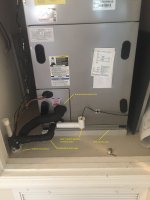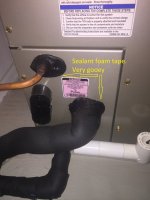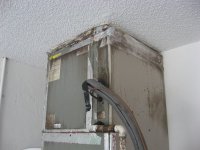pcarpe01
New Member
We have a Bryant system for central AC. The air handler is installed in the attic. We recently got a new roof installed - all new plywood, shingles, etc. On hot days we can smell the roof within the house. I went to the attic and noticed that air leaks where the refrigeration lines enter the cabinet. I also noticed the secondary condensate drain was not connected - which was sucking air and the air purifier cover was also leaking. When I say leaking I am referring to air being pulled into the cabinet from the surrounding area, the attic. My question is that is it common to have air leaks in the air handler and how are they typically sealed? I also need to better check the return ducting for any sign of leaks. It looks like there should be some kind of grommet over the refrigerate lines to seal the cabinet. I called the so-called experts and they look at me clueless. In any event, I sealed the above leaks using 1409 tape, at least for now, until a permanent fix is put in.



